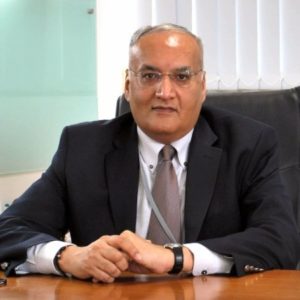In September 2020, Happiest Minds Technologies underwent one of the most successful IPOs of the decade and during its 10 year anniversary, its chairman, Ashok Soota indicated the company’s game plan in the next 10 years. In this interview with Smart CEO, Rajiv Shah, President and CEO of the company’s Digital Business Services takes us through what the 10-year plan is, and his views on the future of the Indian IT industry

One of the biggest highlights of Happiest Minds Technologies’ journey in the last three years is the company’s entry into the public markets with an IPO. In September 2020, the Happiest Minds’ shares oversubscribed 151 times, and it got bids for 3.51 billion shares compared to the 23.3 million shares on offer. It was among the most successful IPOs this decade. As Ashok Soota, the company’s chairman added in the company’s annual report, it was also the first IPO to be filed and completed during the lockdown, and completely digitally executed.
Post IPO, in FY21, the company posted a total income of Rs 79,765 lacs, growing at an annual CAGR of 18%. Its average annual revenue stood at US $6,34,000 with million dollar customers standing at 26. In Q3 FY22, the company’s total revenue for the quarter touched Rs. 2,922 crore (from Rs. 2,012 crore in the same quarter last year), and added 11 new clients.
As Happiest Minds prepares for a post-pandemic and post IPO world, we engage in a conversation with Rajiv Shah to find out how the company coped with the pandemic, emerging technologies it is capitalizing on, and growth plans in the next five years.

What are your top 3 priorities as the CEO, today?
In the new normal, priorities and the dynamics of business strategy have changed. Currently, my top priorities are closely aligned with the company’s vision, that is; to design Happiest Minds for perpetuity, to build a growth-oriented roadmap on the strong foundation of our culture and corporate ethos, and to build a consultative domain framework which is business focused. Lastly, we also want to maintain organizational growth and deliver value to all our shareholders, customers, partners, and employees.
From a geographic perspective, which are your primary markets?
We operate across the U.S, the U.K/ Europe, APAC and MENA. However, the US and Europe are our key markets because we find that most organizations in these regions are investing heavily in digital transformation initiatives. To match their business requirements, we want to create domain focused solutions and services with personalization at the geo level.
What emerging technologies is Happiest Minds capitalizing on?
We are capitalizing on trends like data fabric, cybersecurity mesh, decision intelligence, hyper automation, AI engineering and generative AI. We plan to implement these technologies by auditing existing workflows, technology and resource pool, utilizing data from the consistent feedback mechanism from our customers and prospects, and taking them through the digital transformational journey to create a reimagined state.
How would you say the Indian IT companies have fared, compared to global competitors in the last few years?
With technological and structural advancements in the country, Indian IT companies have created a strong presence in the domestic and global markets. They have become an equivalent, and or in certain aspects, even stepped ahead of the global IT competition, especially in terms of revenue and profitability. If we look at the market share, compared to global companies, the Indian IT companies have upped their game by transforming themselves to take advantage of the digital renaissance more strategically. They have also made new strides in addressing the business needs associated with the digital transformation initiatives. The only gray area where they might need more rigor or investment is in creating a consultative-led approach and business knowledge initiatives.
What does the future of Indian IT look like?
Firstly, I believe the future for Indian IT is bright because an increasing number of companies are looking to transform their business model to survive and grow in the new normal. Customers are appreciating the significance of digital, and they are integrating emerging technologies with their core business strategies. And, this is creating a great opportunity for Indian IT companies to carve a niche and create business relevant solutions and services. Secondly, over the last few years, Indian IT companies have also introduced cross skill and upskill strategies to create a highly skilled resource pool with specialization in digital technologies. All this, while keeping a clear focus to solve business problems. From creating centers of excellence for niche technologies, multiskilling people and bringing agility in process, they have done a good job of transitioning themselves from tech-driven companies to business-first and digital-first companies.
What does the roadmap for Happiest Minds look like in the next 5 years?
We aim to design Happiest Minds for perpetuity, create accelerated profitable growth, build & sustain a world class team, be the ambassador of Happiness and stay true to our culture and ethos. As we grow, we want to be recognized for thought leadership in our focus areas of technology & solutions and be known for our ESG standards. We will continue to stay focused on the basics of what has gotten us here. The 5-year road map aims at enabling expedited growth organically and inorganically, enhancement of skills, domain consultative approach and establishment of niche additional CoEs on futuristic technologies.
IDA Ireland ITeS 100 happiest minds rajiv shah